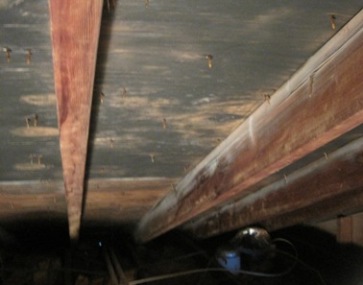Find a Mold Specialist Now
Click or Call, Toll-Free 24/7
Penicillium In the home
You’ve probably heard of penicillin, but you may not realize it’s made from a type of mold called penicillium, which can sometimes be found growing in ordinary homes. While the antibiotic penicillin has many health benefits, exposure to the mold from which it’s made can cause serious health problems. We’ll tell you what it looks like, where you might find it, and how it might affect your health. We’ll also tell you how to get help if harmful mold like this is growing in your home.
Where Penicillium Grows
This blue or blue-green colored mold is one of the most common kinds of mold found in ordinary homes. There are more than 200 known species and most of them grow quickly and spread easily from one place to another. It’s commonly found growing on fabrics, old mattresses, couch cushions, carpet, plywood and even in the insulation inside walls.
A Few Words about Penicillin
Penicillin is an antibiotic made from mold. It has long been known that some kinds of mold have healing properties – the ancient Egyptians used to apply poultices of moldy bread to infected wounds – but it wasn’t until 1928 that penicillin, the world’s first antibiotic, was discovered.
When it was widely introduced in the 1940’s, penicillin changed the face of medicine. Suddenly, patients could survive infections that might have previously been fatal. In fact, penicillin is believed to have saved more than 80 million lives in the years since its discovery.
Penicillin is not the only antibiotic made from mold. Penicillin was the first, but other antibiotics are now made from other kinds of mold, like cephalosporin, which is made from a mold called acremonium.
Health Problems Caused by Exposure to Penicillium
Exposure to mold in the home is not good for your health, even if it is the kind of mold that antibiotics are made from. It’s not good for your lungs to inhale mold spores and some types of mold, including this one, produce toxic substances known as mycotoxins.
 Penicillium in Attic on Roof Sheathing
Penicillium in Attic on Roof SheathingExposure to mold spores can cause all sorts of respiratory problems, including shortness of breathing, coughing, sneezing, a runny nose and chronic sinusitis. Allergic reactions may occur in some people, which may include respiratory symptoms, a rash or hives, and even trouble breathing and swelling in the throat (a potentially life-threatening reaction called anaphylaxis). In some instances, mycotoxins may damage internal organs.
Immunocompromised people – those with immune systems that are not functioning at full capacity due to illness or for some other reason – are at greatest risk for health problems caused by exposure to this mold, but even previously healthy individuals can get sick from being around mold. If you are experiencing symptoms of illness you suspect are caused by mold, see your doctor.
Removing Penicillium from Your Home
Any type of mold needs to be removed from your home as soon as possible. Some people are more susceptible to mold-related illness than others, including infants, elderly people, those with respiratory disorders like asthma or emphysema, and those with poorly-functioning immune systems, whether that is due to an illness such as HIV or AIDS or as a result of medical treatment like chemotherapy or an organ transplant. However, previously healthy children, adolescents and adults can become ill as a result of exposure to mold in the home. Even pets can become ill. To protect your health and the health of your family, it is important to have the mold removed from your home as soon as you can.
It is important to avoid further exposing yourself to potentially harmful mold spores and mycotoxins when removing mold from your home. If you decide to tackle the job yourself, make sure you use the appropriate safety gear to protect yourself, including an N-95 or N-99 respiratory mask. You can read more about personal protective equipment for mold removal.
We recommend scheduling a free consultation with a mold removal professional. Even if you plan to do the work yourself, you’ll benefit from some expert advice, including tips on how to protect yourself from excessive exposure to mold. Note that if you have mold covering a large surface area (greater than about 10 square feet) or mold in your home’s heating, ventilation and air conditioning system, or if you are suffering from mold-related health problems or are at increased risk for mold-related illness, the U.S. Environmental Protection Agency (EPA) recommends hiring a professional for the job. You can find qualified mold removal professionals offering free consultations in your area by following the link.
Return From Penicillium To Our Main Mold Types Page
Ref: EPA
Privacy Policy Terms and Conditions Accessibility Do Not Sell My Information Disclaimer Contact Us




